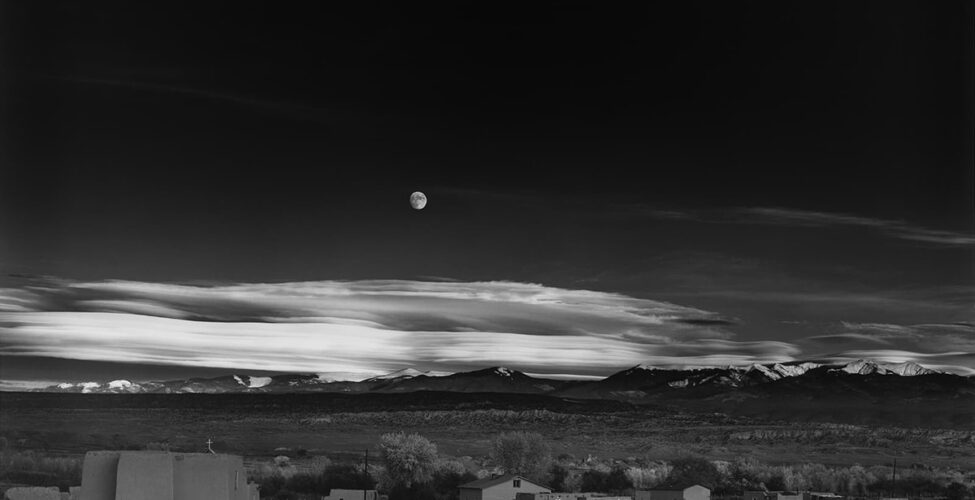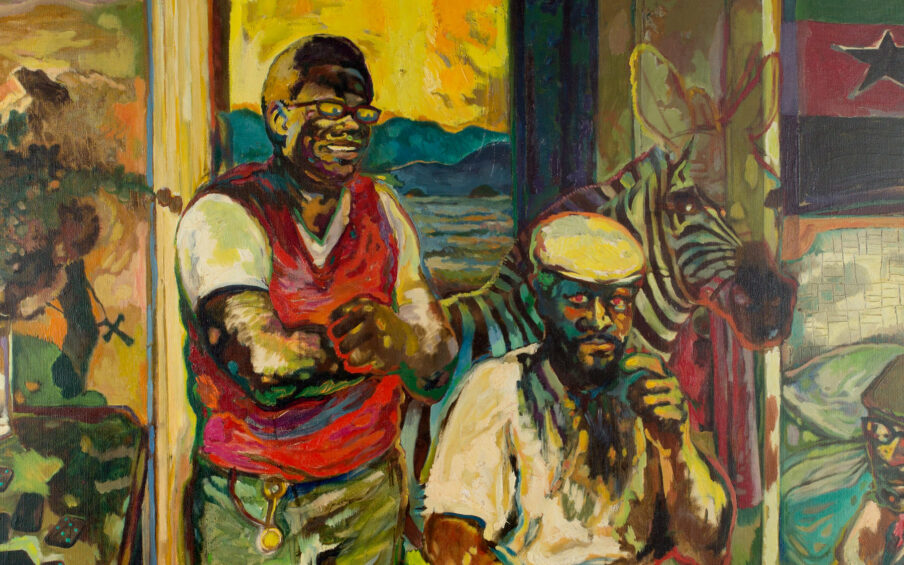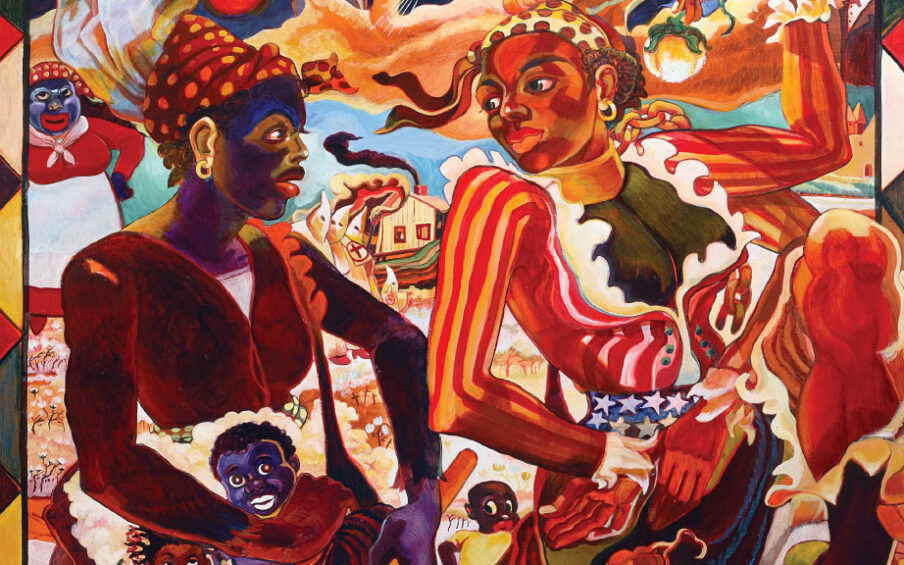Tonight’s waxing gibbous moon has me thinking about how folks love to photograph the moon, and how difficult it is to capture this celestial orb in a way that matches what we feel when we observe it with our eyes. One of the most famous photographs of the moon is currently on view at the Museum: Ansel Adams’s Moonrise, Hernandez, New Mexico, 1941, which Adams stopped to make while driving to Santa Fe with his young son, Michael, and friend, Cedric Wright. Rebecca Senf writes about the creation of the negative in her book, “Making a Photographer: The Early Work of Ansel Adams”:
“With the sun setting, he knew he had to act fast. Swerving his station wagon to the side of the road, he commanded his son and Wright to help him set up his eight-by-ten-inch view camera. Tripod, camera body, lens board, lens, dark cloth, loaded film holder, and light meter all had to be pulled out and assembled before he could frame and focus the view—made all the more urgent by the rapid descent of the November sun. In the frantic hustle, the light meter could not be found. Evaluating the scene before him, Adams miraculously remembered the luminance of the full moon—two hundred fifty candles per square foot—and was able to approximate an exposure for the scene. He released the shutter and captured the clouds, moon, and mountains beyond the little town of Hernandez. Before he could make a second, backup negative, the sun dipped below the horizon, and the opportunity was gone.”
I wish everyone photographing the moon tonight good luck! If it doesn’t turn out so well for you, come see Moonrise, Hernandez in person in the exhibition Ansel Adams in Our Time, which closes on August 1. Like Adams’s chance to make this amazing photograph, time is running out to see the exhibition!
—Julia Dolan, The Minor White Curator of Photography



